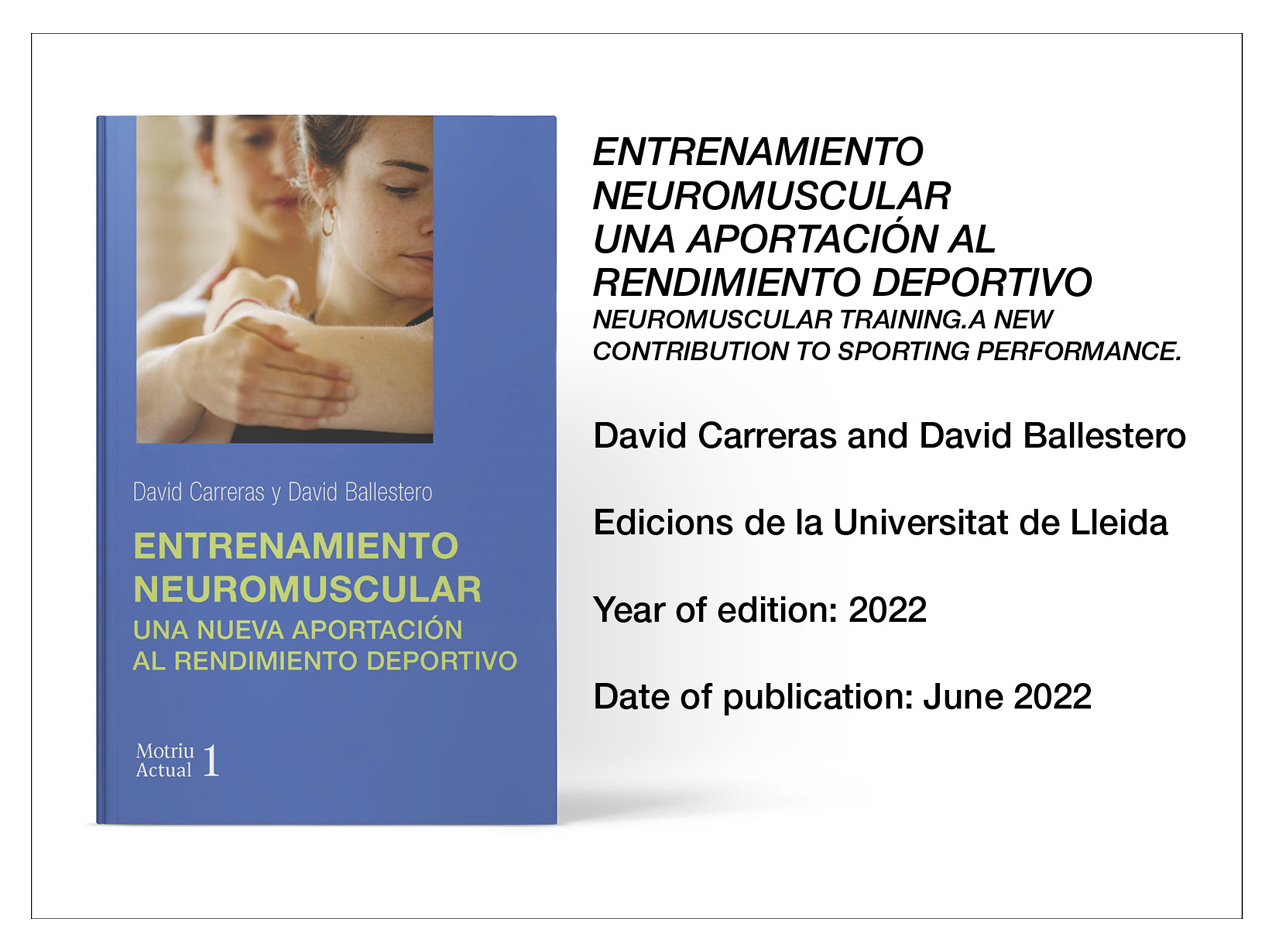Book review: Carreras, D. & Ballestero, D. (2022). Entrenamiento neuromuscular. Una nueva aportación al rendimiento deportivo
Cite this article
Peirau, X. (2022). Book review: Carreras, D. & Ballestero, D. (2022). Entrenamiento neuromuscular. Una nueva aportación al rendimiento deportivo. INEFC-UdL. Apunts Educación Física y Deportes, 150, 74-75. https://doi.org/10.5672/apunts.2014-0983.es.(2022/4).150.09
The book Neuromuscular training is a didactic tool aimed at all physical exercise professionals dedicated to sporting performance, with the aim of guiding professionals’ intervention from both a performance optimisation and a preventive perspective. The text presents a point of convergence between the contributory paradigm and functional training, and its content is based on the understanding of the athlete’s body as a systemic complex subjected to the high demands of sporting performance, which often force it to exceed the threshold of tolerance of its own capabilities. This can lead to imbalances in the neuromuscular system that affect mobility, stability or the execution of the specific technique.

In the context of physical exercise and sport, it is accepted that the concept of neuromuscular training is associated with the set of methods that aim to improve communication between the muscle and the central nervous system in order to enhance the efficiency of the specific actions required by the sporting discipline. This approach allows for a wide range of possibilities to address the optimisation of neuromuscular connectivity. This can include either exercises based on external stimuli that elicit involuntary responses or exercises based on internal commands that trigger voluntary responses.
The Neuromuscular Exercise Sequence© is the approach that, based on voluntary exercise, brings together assessment techniques and training methods that favour the adequate control of all the neuromuscular processes for the correct execution of the athlete’s movement.
The structure of the book presents, at the beginning, the theoretical construct on which the NES© is based and the way in which it justifies its double aspect: optimisation and prevention. It highlights the need for the athlete’s training to be approached from a much broader perspective than the mere response to a functional action. And it places control of the movement at the starting point. The second chapter presents the techniques for detecting, restoring and maintaining possible muscular weaknesses and instabilities, assessed by means of simple tests to determine the level of control of the muscle involved. The third part focuses on how to assess and improve the level of movement control when the voluntary command involves the participation of muscle chains. The fourth chapter presents different systems and methods of functional movement assessment, some of them with obvious origins in therapeutic techniques and others with a clear influence of North American functional training trends. The last chapter discusses how the strengthening of the myotendinous complex can be improved through strength training methods, which allow the optimisation of muscle capacity at the moment of tension generation.
It is without doubt a book that will not leave the reader indifferent and will offer a more complete and coordinated vision of the training of the muscular system and the nervous system.
ISSN: 2014-0983
Received: March 21, 2022
Accepted: May 20, 2022
Published: October 1, 2022
Editor: © Generalitat de Catalunya Departament de la Presidència Institut Nacional d’Educació Física de Catalunya (INEFC)
© Copyright Generalitat de Catalunya (INEFC). This article is available from url https://www.revista-apunts.com/. This work is licensed under a Creative Commons Attribution-NonCommercial-NoDerivatives 4.0 International License. The images or other third party material in this article are included in the article’s Creative Commons license, unless indicated otherwise in the credit line; if the material is not included under the Creative Commons license, users will need to obtain permission from the license holder to reproduce the material. To view a copy of this license, visit https://creativecommons.org/licenses/by-nc-nd/4.0/deed.en



